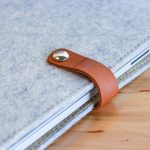Curious if duct tape truly adheres to fabric like a magnet? In this exploration, we'll dissect the scientific principles behind duct tape's grip on fabric and uncover the key factors influencing its adhesion. We'll also provide expert tips for optimizing its effectiveness.
Without resorting to hyperbole or unsubstantiated claims, we'll delve into common mistakes to avoid when using duct tape on fabric. Additionally, we'll propose alternative solutions for fabric repairs.
Stay tuned for an objective, meticulous examination that will equip you with the knowledge and mastery to confidently answer the question, 'Can duct tape really stick to fabric?'
Key Takeaways
- Duct tape's adhesive properties are a result of the surface interaction between the sticky side of the tape and the fabric.
- Microscopic particles on the surface of the tape create temporary bonds with the molecules on the fabric's surface through weak atomic forces known as van der Waals forces and electrostatic interactions.
- Surface texture and cleanliness of the fabric significantly impact duct tape's adherence.
- Proper fabric preparation and thorough cleaning enhance the adhesive strength of duct tape.
The Science of Duct Tape Adhesion
You can understand the science of duct tape adhesion by examining the molecular interactions between the tape and fabric. Duct tape's adhesive properties are a result of the surface interaction between the sticky side of the tape and the surface of the fabric. The adhesive on the tape is a pressure-sensitive adhesive, which means it forms a bond when pressure is applied. This pressure activates the adhesive and allows it to create a strong bond with the fabric.
The adhesive properties of duct tape are due to the presence of microscopic particles on the surface of the tape that form temporary bonds with the molecules on the fabric's surface. These bonds are created through a combination of weak atomic forces known as van der Waals forces, and electrostatic interactions. These interactions enable the tape to adhere firmly to the fabric.
Understanding the molecular interactions between duct tape and fabric provides insight into the remarkable adhesive properties of duct tape. These properties make duct tape a versatile and reliable tool for a wide range of applications, from household repairs to industrial uses.
Factors Affecting Duct Tape Adherence to Fabric
Examining the surface texture and cleanliness of the fabric before applying duct tape can significantly impact its adherence. Fabric preparation plays a crucial role in determining the adhesive strength of duct tape. Environmental conditions, such as temperature and humidity, can also influence the tape's ability to stick to fabric.
Additionally, the surface texture of the fabric, whether smooth or rough, can affect the tape's ability to adhere securely. It's important to ensure that the fabric is free from any dust, dirt, or oils, as these can hinder the tape's ability to bond effectively.
Considering these factors when preparing the fabric for duct tape application can enhance its adherence and ensure that it effectively serves its purpose.
Tips for Maximizing Duct Tape's Grip on Fabric
Maximizing duct tape's grip on fabric involves ensuring proper preparation and thorough cleaning before applying the tape. Fabric preparation is crucial to enhance the adhesive strength of duct tape. Before applying duct tape, it's essential to clean the fabric surface to remove any dirt, oil, or residue that could compromise the tape's ability to adhere effectively. Here are some tips to maximize duct tape's grip on fabric:
| Fabric Preparation | Description |
|---|---|
| Clean the Surface | Use a mild soap and water to clean the fabric surface. Ensure it is completely dry before applying duct tape. |
| Remove Lint and Debris | Use a lint roller or adhesive tape to remove any lint or debris from the fabric that could interfere with the tape's adhesion. |
| Smooth the Surface | Iron the fabric to create a smooth surface, free of wrinkles or creases, which can impact the tape's ability to adhere. |
| Apply Firm Pressure | Once the duct tape is applied, use firm pressure to ensure it bonds securely with the fabric surface. |
Common Mistakes When Using Duct Tape on Fabric
When using duct tape on fabric, avoid underestimating the importance of proper surface preparation. Proper application is crucial to avoid damaging the fabric and to ensure the duct tape adheres effectively. Here are some common mistakes to avoid:
- Neglecting to clean the fabric: Failing to remove dirt, oils, or residues from the fabric can prevent the duct tape from adhering properly.
- Skipping priming or prepping the surface: Using a primer specifically designed for fabric can significantly improve the adhesion of the duct tape.
- Using the wrong type of duct tape: Not all duct tapes are suitable for fabric. Using a duct tape specifically designed for fabric or a high-quality, heavy-duty tape can make a significant difference.
- Applying the tape with wrinkles or air bubbles: Properly smoothing out the duct tape onto the fabric is crucial to prevent damage and ensure a secure bond.
- Ignoring the environment: Extreme temperatures or humidity can affect the effectiveness of the duct tape's adhesion. Be mindful of the conditions when applying duct tape to fabric.
Alternative Solutions to Duct Tape for Fabric Repairs
If you're looking for an alternative to duct tape for fabric repairs, consider exploring the effectiveness of fabric glue. Fabric glue offers a strong and flexible bond that can be used to mend fabric tears, attach patches, and secure hems. When using fabric glue, ensure that the fabric is clean and dry before applying the adhesive. Apply a thin layer of fabric glue to one side of the fabric and press the damaged area together firmly. Allow the fabric glue to dry completely according to the manufacturer's instructions for a durable and long-lasting repair.
Another effective alternative to duct tape for fabric repairs is sewing patches. This method involves using a needle and thread to attach a fabric patch to cover and reinforce a damaged area. Patches can be cut from matching fabric and securely sewn onto the damaged fabric, providing a seamless and durable solution. When sewing patches, it's important to use a strong and matching thread to ensure a secure attachment.
Frequently Asked Questions
What Are Some Creative Uses for Duct Tape on Fabric Other Than Repairs?
For creative crafts, duct tape can be used to make wallets, purses, and even clothing embellishments. In fashion design, it can add unique patterns and textures to fabric, creating one-of-a-kind pieces.
Can Duct Tape Be Used on Delicate Fabrics Such as Silk or Chiffon?
Duct tape's adhesive strength can damage delicate fabrics like silk or chiffon. While it's effective for heavy-duty repairs, it's best to avoid using it on these fabrics to prevent potential damage. Consider alternative fabric-friendly adhesives.
Is There a Specific Type of Duct Tape That Works Best for Adhering to Fabric?
Yes, some brands of duct tape have better adhesive strength for fabric. When choosing, consider Gorilla and Duck brands. To remove, use heat or adhesive remover for residue cleanup. Always test on a small area first.
Can Duct Tape Be Safely Used on Outdoor Fabrics Such as Canvas or Nylon?
When using duct tape on outdoor fabrics like canvas or nylon, consider the potential impact of weather and temperature on adhesive strength. It's important to test on a small, inconspicuous area first to ensure it will safely adhere.
Are There Any Potential Safety Concerns When Using Duct Tape on Fabric, Such as Skin Irritation or Damage to the Fabric?
When using duct tape on fabric, there may be potential safety concerns such as skin irritation and fabric damage. It's essential to consider these factors before applying duct tape for creative uses to avoid any issues.
- The Use of Nonwovens in Construction and Civil Engineering - July 11, 2025
- The Use of Nonwovens in Construction and Civil Engineering - July 11, 2025
- The Use of Nonwovens in Construction and Civil Engineering - July 11, 2025







